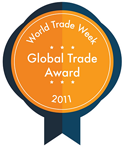Back in person at the Javits Center, exhibitors present containers, components, equipment, and services to fill, ship, protect, and optimize the packaging process.
With the pandemic remaining top-of-mind, parenteral products rank as a primary focus at INTERPHEX 2021 (October 19–21, Javits Center, New York, NY). Demonstrations throughout the show floor display fill/finish, labeling, and inspection systems for vials, cartridges, and syringes. Anticounterfeiting and serialization also garner strong interest.
Filling equipment
To make the step up from manual filling, TurboFil Packaging Machines has introduced a benchtop syringe filling machine. Offering full control of filling parameters in single or dual operation, the TipFil unit handles up to 12 syringes/min. It can accommodate a variety of syringe sizes and fill liquid or viscous products through the tip. Infeed scenarios include hoppers and reservoirs, and an optional attachment for filling via bottles and vials. Suckback control helps heighten fill accuracy, and all product contact parts are fully disposable, single-use plastic. Filling occurs when a servo motor-driven piston mechanism draws the needle back via the plunger. The distance the plunger is pulled back dictates the amount filled. This design eliminates the need to clean a metering device and ensures precise, repeatable fill (1).
TurboFil also will display its SimpliFil syringe filling and assembly system. Suitable for small to medium batches, the unit accurately fills syringes via ceramic piston, peristaltic pump, or direct draw from a reservoir bag. Walking beam indexing provides intuitive operation and simple, recipe-based changeover. For heightened precision, TurboFil’s TipFil technology allows syringes to be filled through the tip, which is a step-saving innovation eliminating the need to insert plungers post-filling. Rated at 36 syringes/min, the SimpliFil system smoothly handles syringes with tips outfitted for press-on caps and luer caps, as well as safety caps for oral syringes. An optional labeler can wrap syringes with pre-printed labels or print and apply labels for medications requiring variable marking. An automatic syringe loading system also is available, as is fill and label verification (1).
Another new filler designed for small batches, the Versynta FFP from Syntegon, features an integrated isolator. Suitable for potent pharmaceuticals, the modular and configurable system with 100% in-process control precisely fills liquid pharmaceuticals into vials, syringes, and cartridges at rates up to 60 containers/min, and it can be converted to different filling systems including single-use. The Pharma Handling Unit, a four-axis robot developed by Syntegon, safely and gently transports containers without glass-to-glass contact (2).
For combined products, Comecer and ATS have partnered to present a Comecer aseptic isolator equipped with SuperTrak Gen3 Pharma linear motion technology to handle ready-to-mix filling and assembly of combined products. The flexible system also can handle dry powders and pills as well as an array of rigid and flexible packaging formats. Linear motion offers faster speeds than walking beam or other transport systems and reduces particle generation due to minimal moving parts (3).
Labeling, printing, and inspection on show at INTERPHEX
Vial labeling is evolving to accommodate the high-speed glass vial lines producing COVID-19 vaccines and other products. The WL-1-RT wraparound labeler from MG America, the US subsidiary of Italy’s MG2, precisely applies labels at speeds of 600 vials/min. A trunnion system provides positive vial control. The machine can be integrated with thermal-transfer and laser coding and is preconfigured for onboard vision inspection with optical character recognition and verification. Non-conforming labels are rejected prior to application (4).
To automate parenteral product inspection, Stevanato Group has developed an artificial-intelligence-ready Vision Robot Unit. The autonomous module is capable of automatically inspecting both cosmetic and particle properties without human intervention. The robotic, human-like inspection system combines flexibility with automation efficiency to meet emerging smart factory needs and enhance control process reliability for biotech products such as monoclonal antibodies, vaccines, and lyophilized drugs (5).
For serialization needs, WIPOTEC-OCS plans to demonstrate two checkweigher-compatible traceability modules: the TQS-SP serialization unit and the TQS-CP aggregation unit. The TQS-SP serialization unit applies track-and-trace data to individual cartons and can handle up to 600 cartons/min. A specially designed, double-guided, top-band system ensures stable positioning. The TQS-CP aggregation unit provides semiautomatic aggregation of manually repacked folding cartons to provide a reliable parent-child relationship. ConfigureFast software controls all components including camera, printer, and transport system and expedites setup and changeover (6).
https://www.pharmtech.com/view/interphex-features-pharma-packaging-innovations



